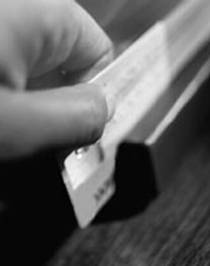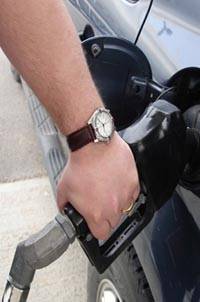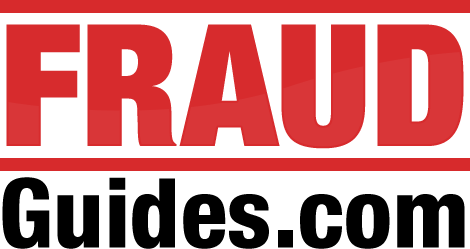Because of credit card skimming, consumers aren’t the only ones concerned about credit card theft.
Skimming is a crime that involves grabbing the data off of your credit card at the point of sale and using that data to manufacture fake credit cards or purchase items using the data. A dishonest employee (grocery checker or restaurant waiter) will use a portable electronic device, such as a PDA hooked to a card reader. When no one’s looking, customer credit cards are swiped to extract their data.
Credit card skimming is a modern crime perpetrated by technically savvy criminals, but stealing credit card numbers can be done by anyone, anywhere without fancy electronics. Any employee with access to customer credit cards can copy the information with nothing more than a pen and paper. If you’re a business owner and this happens enough you could be labeled a “point of weakness” and face steep fines from the credit card companies.

How to avoid Credit Card Skimming
In your workplace:
- Watch for anyone using a device that is not part of your daily activities.
- If anyone offers you money to record account information
- If anyone asks for customer account information over the phone
- Watch for the newest con game which is using a photo cell phone to take a picture of the care.
If any of the above occurs contact your credit card merchant center immediately.
Heads Up to the Warning Signs of Credit Card Fraud
Watch out for customers who:
- Purchase products but care little about colors, sizes or price.
- Don’t ask questions about expensive items
- Try to divert your attention during a sale
- Complete a transaction and return later to make additional purchases.
- Make large purchases just after opening or right before closing.
- Refuse free delivery on large items.
If you suspect Credit Card Fraud
- Hold onto the customer’s credit card if you think you can do so safely.
- Follow your employer’s procedures and notify you supervisor.
- Call your voice authorization center and request a “code 10 authorization” in a very normal tone as to not alert the customer. The operator will tell you what to do.
Caution: Never risk your own safety or the safety of others in the immediate area.
The Hidden Dangers of Paying for Gas at the Pump with Debit and Credit Cards

When you pay for gas at the pump with your credit or debit cards, you could be in for a big surprise.
Paying for gas purchases at the pump by credit card can expose consumers to several risks. The most common issues consumers may face are credit or ATM card skimming, hacking, and unposted surcharges.
Credit & Debit Card Skimming
Credit or ATM card skimming involves taking data off of your card at the point of sale, in this case a gas pump. Once the data is “skimmed” it can be used to create counterfeit credit cards or purchase items using the data. Thieves get the data by placing electronic devices over the real card slot and waiting for someone to come along and attempt to purchase gas.
The data is often sent wirelessly to a a computer in a nearby vehicle. Sometimes a camera is used to record PIN numbers, but a telescope will do the job in a pinch. Once the crooks have the card data and PIN numbers, they collect their skimming device and disappear. You won’t even know what happened until strange charges appear on your statements.
If your debit card was “skimmed” and your PIN number captured, you could have big problems. All the funds in your account are at risk. I know that sounds scary, and it should, but you can reduce your exposure to the risk of card skimming by being smart. If something doesn’t look quite right about a pump’s card reader, find another pump or pay inside. Don’t take unnecessary risk.
How to defend yourself against card skimming
To guard against debit or credit card skimming at gas stations:
- Pay for all purchases inside the the store whenever possible. Sign credit card receipts and make sure you get a copy.
- Carefully examine your credit card and bank statements monthly and report irregularities immediately.
- If you find a gas pump with a skimming device, report it to the local authories and warn the store clerk about the suspect pump
Debit Card Blocking
Consumers also need to be aware of something related to paying for gas at the pump with debit cards which isn’t a scam, but can still cause grief down the road.
Using your debit card at a pump that doesn’t require a PIN can cause an amount in your checking account to be blocked for anywhere from a few hours to a few days. If you aren’t aware of it, the blocked funds can lead to bounced checks and insufficient funds for automated payments!
The reasononing behind this practice is that the gas companies don’t know, in advance, how much gas you’re going to put in your car. If the transaction required a PIN number there would be no problem. Those transactions are processed immediately. Transactions without a PIN are processed later in batches, usually within 72 hours. Since they have no way of knowing how much gas you’re going to pump, they gas companies have devised this blocking system to help guarantee payment. Unfortunately, this means some of your money is frozen until that batch is run.
How much is blocked varies from gas company to gas company. Chevron claims it only pre-authorizes one dollar for gas pump transactions and that they do it to make sure the card is active. That’s the low end of the spectrum. Many gas companies place a hold of as much as $75 on both debit and credit card gas pump transactions. It’s not a huge sum of money, but if your money’s tight and you don’t have much in your account it can make all the difference in the world.
More Gas Pump Related Information
- Gas-Saving Devices – Do they work or are they scams?
- What’s the difference between premium and regular gas?
- What does octane mean?
